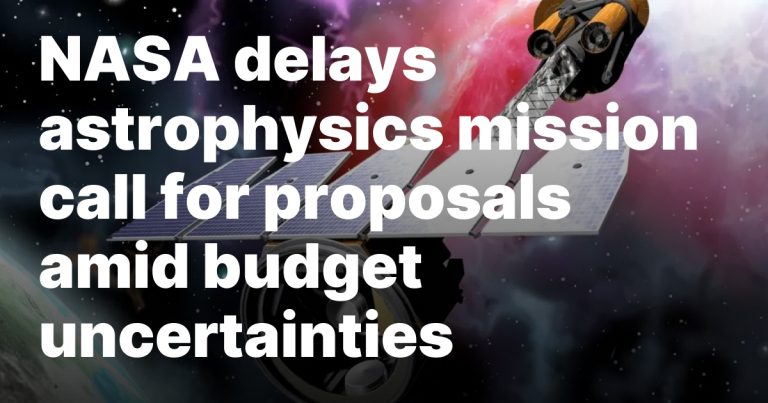WASHINGTON — NASA is delaying the next competition for an astrophysics mission by a year, the latest sign of the fiscal pressures an upcoming budget proposal is placing on the agency’s science programs.
In an April 29 announcement, NASA informed the astrophysics community that it was delaying until at least April 2026 the release of the next announcement of opportunity (AO) for the next Small Explorer (SMEX) mission. That AO was expected to be released this April after NASA published a draft version in January.
The announcement did not disclose the reason for delaying the AO. Many in the astrophysics community, though, link it to the upcoming release of the agency’s fiscal year 2026 budget proposal, which would reportedly cut about two-thirds from the $1.5 billion NASA received for astrophysics in fiscal year 2024. That is based on leaked details from a budget “passback” document delivered to NASA by the Office of Management and Budget in April.
In an April 3 presentation to the National Academies’ Committee on Astronomy and Astrophysics, Shawn Domagal-Goldman, acting director of NASA’s astrophysics division, said NASA was still working to release the AO by the end of the month. However, he added it was dependent on the agency’s projected budgets.
“The number one question I’ve been getting from people lately is, ‘When are you going to put out the SMEX call?’” he said. “The SMEX call is going to be dependent on the budgets that we’re getting for ’26 and beyond.”
He said at the time that NASA had yet to receive the passback. “Our plan is to wait until we have knowledge of what the budget climate is going to be under this administration before we go forward with a release.”
The SMEX program is for relatively small missions, with a cost cap in the draft AO for all phases of the mission excluding launch of $170 million. The most recent astrophysics SMEX mission, the Compton Spectrometer and Imager (COSI), was selected in 2021 for a launch now planned in 2027.
NASA projected in the draft AO providing nine-month study contracts to two or three finalists in March 2026, then selecting the wining proposal in the second quarter of 2027 for launch no later than May 2031.
The decision to delay the AO comes amid ongoing concern about the effect of cuts in NASA’s overall science budget of nearly 50% seen in the passback. On April 30, a coalition of industry and advocacy groups sent joint letters to congressional appropriations and authorization committees, expressing “profound alarm” about the effect the cuts would have on the agency, science community and broader industry.
“Such a drastic reduction would inflict immediate and irreparable damage upon the nation’s space science enterprise,” the letters state, terminating dozens of operating missions and halting work on “nearly all” future missions. “A 47% reduction to NASA Science would represent a surrender of American leadership in a domain it has long defined.”
Public details about the NASA budget proposal may be released soon. Speaking at a meeting of the Mars Exploration Program Analysis Group April 30, Louise Prockter, director of NASA’s planetary science division, said the agency expected the release of a top-level “skinny” budget proposal as soon as May 2. That will provide an overall budget figure for NASA but only a few details. The complete budget proposal, she said, is expected around Memorial Day.

